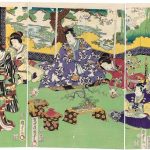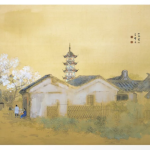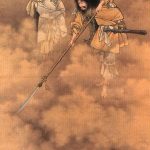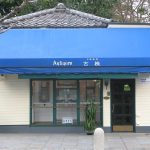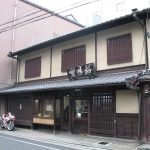From Ian Ropke, This month visitors will have a great chance to photograph children all dressed up in kimono, a special opportunity not to be missed. November is the month of the shichi-go-san (7-5-3) ritual for girls (seven and three years of age) and boys (five years of age). Shichi-Go-San is believed to have started in the Heian Period (794-1185). It was a ritual … [Read more...] about Shichi-go-san: A Special Ritual for Child Health and Longevity
Ian Ropke
Takeuchi Seihō – Japan’s most important modern Japanese-style painter
Takeuchi Seihō (竹内 栖鳳 - his real name was Takeuchi Tsunekichi) lived from December 20, 1864 - August 23, 1942. He was an early master of nihonga art, and prior to World War II led a notable circle of painters in Kyoto. His former residence in Higashiyama still stands as The Sodoh - now a restaurant and event space. Ian Ropke writes, During Takeuchi’s early youth his … [Read more...] about Takeuchi Seihō – Japan’s most important modern Japanese-style painter
Shinto – Deities, Shrines and Symbols
Ian Ropke writes, Shinto is Japan’s original religion and today it maintains a strong position next to the country’s other main religion: Buddhism. It is interesting to note that nearly all Japanese do not even know what the word Shinto means. The word Shinto comes from the Chinese characters: god and path. Elegantly translated Shinto means The Way of the Gods. Today, if you … [Read more...] about Shinto – Deities, Shrines and Symbols
Kyoto Antiques: Shopping & Window Shopping
Ian Ropke writes, There are two areas in Kyoto known for antiques: Teramachi and Shinmonzen. Both areas are perfect for window shopping and, naturally, shopping. Teramachi, south of Marutamachi, north of Oike but mostly north of Nijo, is Kyoto’s newest antique center. It is more casual, and often quite a bit cheaper when it comes to antiques pure and simple … [Read more...] about Kyoto Antiques: Shopping & Window Shopping
Kyoto Kanban: Unique Shop Signboards in the Old City
Ian Ropke writes, Japan’s ingenious and eye-catching signboards known as kanban are unique. The earliest examples avoided the use of words, presumably because they couldn't have been read by an illiterate public, and often focused on the shape of the product, or the form of the container in which it was sold. Larger than life carvings of objects such as geta, candles, … [Read more...] about Kyoto Kanban: Unique Shop Signboards in the Old City
